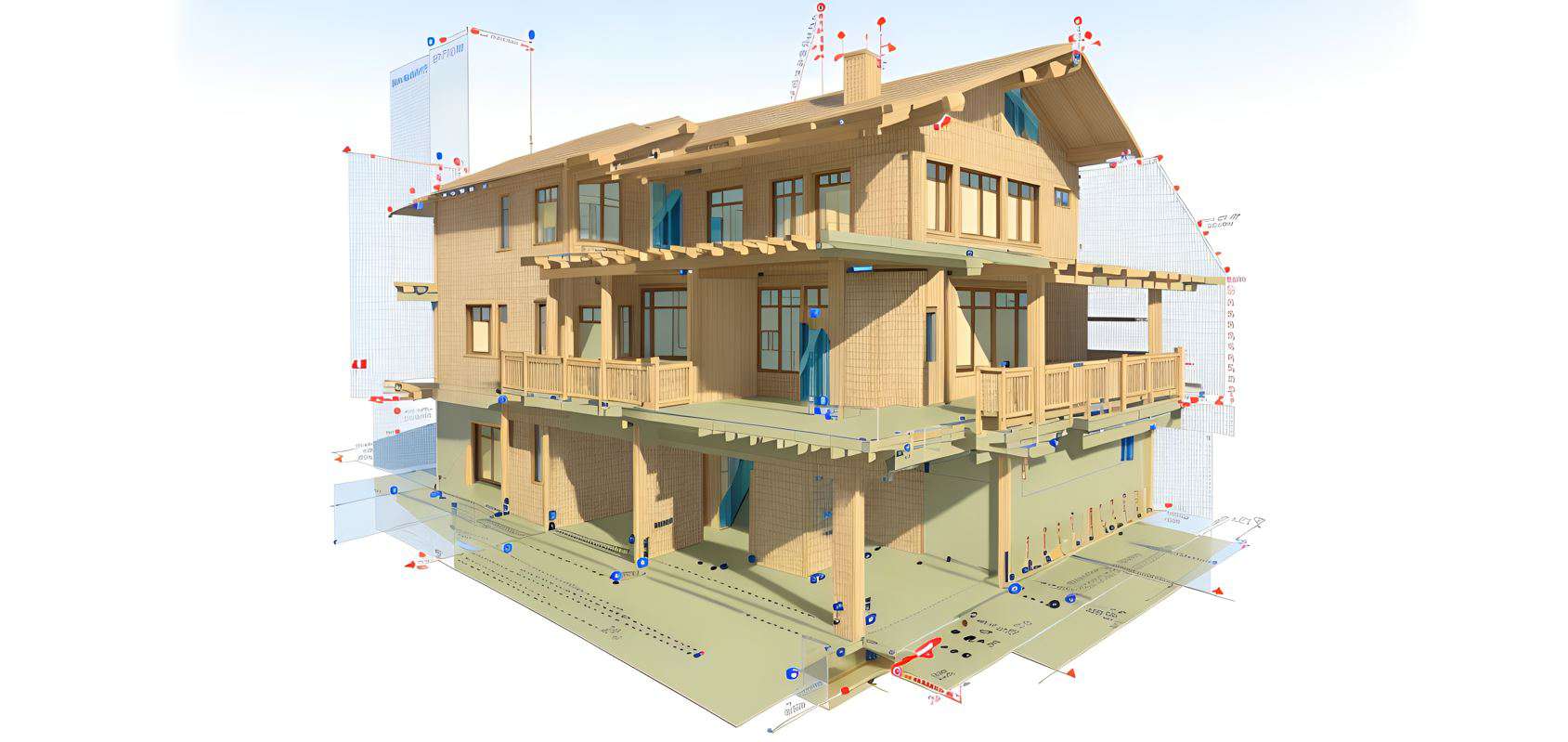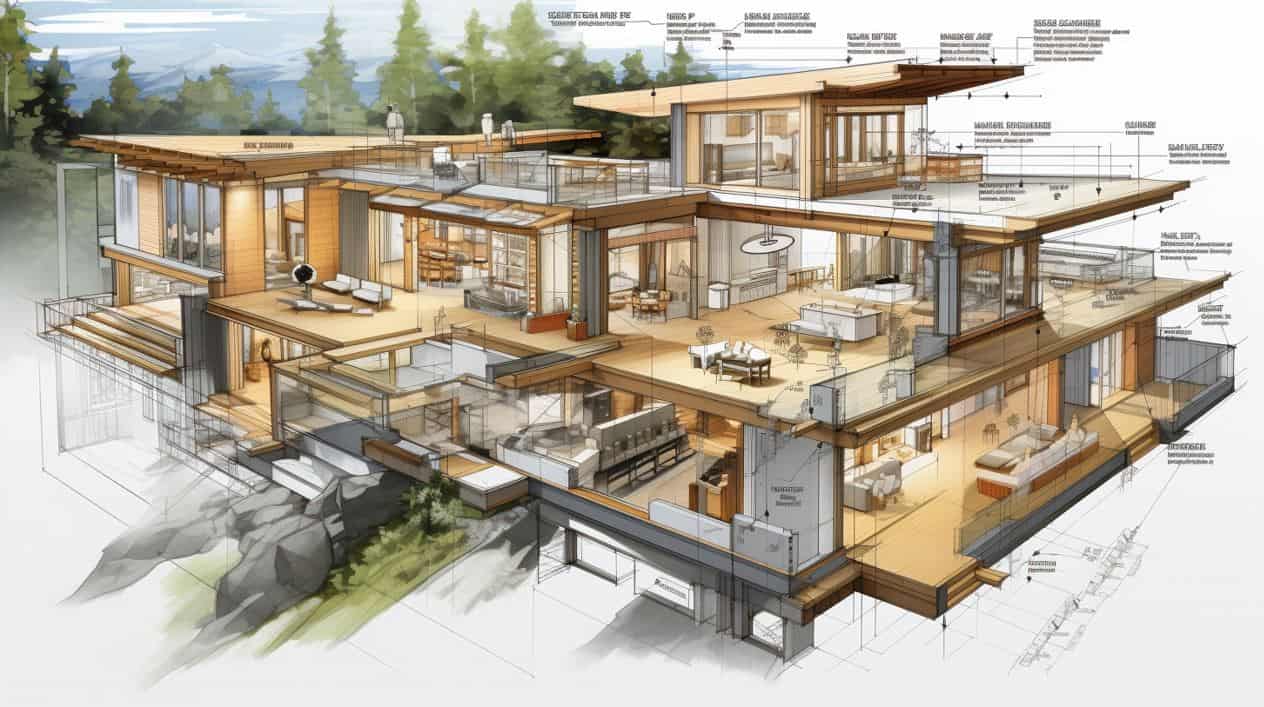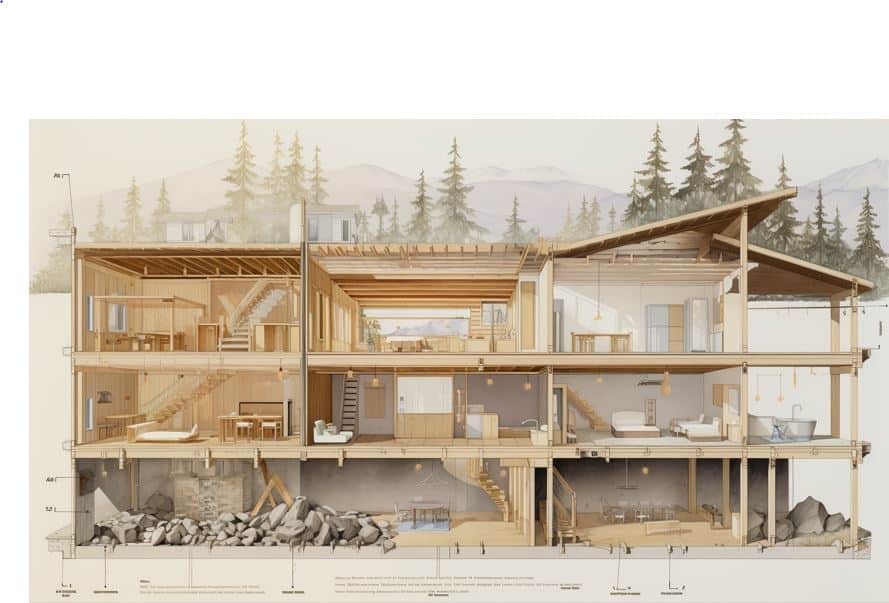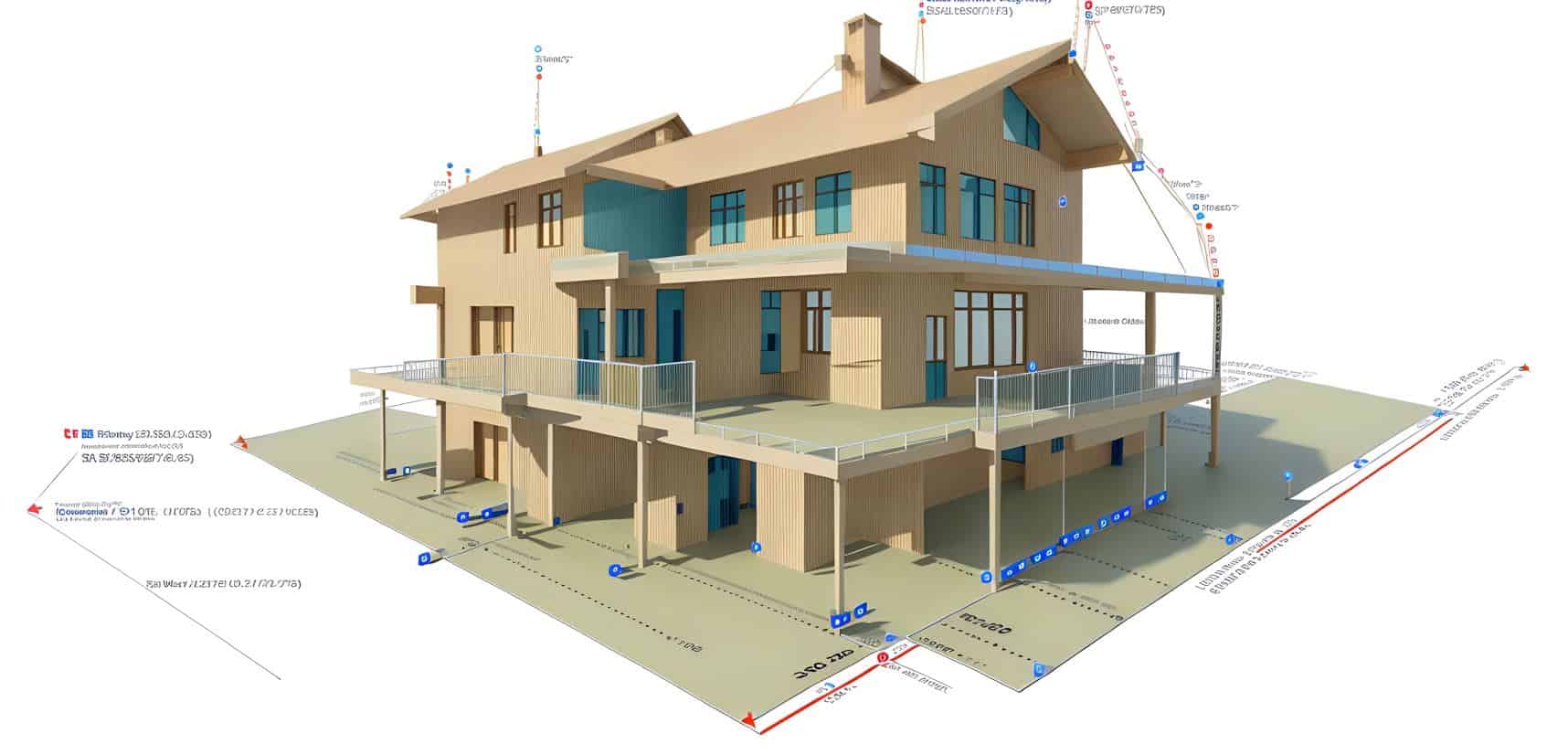
Zoning in the context of architecture and urban planning refers to the regulation of the use of land and buildings by local government authorities. It is a mechanism to organize urban space and activities to ensure that various land uses are compatible with each other. Zoning laws help maintain a level of order within different regions, guiding the development of communities.
Here is an overview of zoning with classifications and details:

Zoning ordinances are the written laws that provide the particulars for each type of zoning, such as what is permissible and what is not. They may include :
The required distances from structure to the property lines.
The ratio of a building’s total floor area to the size of the piece of land upon which it is built.
How tall a structure can be.
How many units can be built per area of land, particularly relevant in residential zones.

In practice, zoning can lead to segregation by income and race, sometimes leading to gentrification, and can also stifle development and drive up housing prices.
Understanding and complying with the various zoning regulations is crucial in architectural practice, as these govern what is possible on a specific parcel of land.

To obtain zoning information for Canadian provinces, various online resources are available, typically provided by municipal or provincial governments. Here are examples of websites where you can find zoning information for different areas across Canada:
To obtain zoning information for Canadian provinces, various online resources are available, typically provided by municipal or provincial governments. Here are examples of websites where you can find zoning information for different areas across Canada:

The terms you’ve listed relate to land development standards, zoning bylaws, and processes one may encounter when planning a construction or renovation project in Canada. I’ll provide a brief explanation for each:
The classification of land according to the type of activity that is accepted on that land under local zoning laws. Examples include residential, commercial, industrial, agricultural, recreational, or mixed-use categories.
The smallest width of a property along the street or access point that is permitted under zoning laws. It ensures adequacy of access and often correlates with the type of development (e.g., single-family, multi-family).
Also known as Floor Area Ratio (FAR), it is the ratio of a building’s total floor area (excluding basements, parking, and certain utility areas) to the area of the plot/land on which it is built. This defines the intensity of land use and is used to control the bulk of buildings.
This is the tallest height at which a building can be constructed as per the local zoning by-laws. It’s given in either meters or the number of stories and affects the building’s scale relative to its surroundings and the overall skyline.
The portion of the lot that is covered by the building footprint, expressed as a percentage. It regulates density and ensures there is space for yards, gardens, and open spaces on the property.
The minimum distance that the zoning by-law requires to be maintained between a building and the property boundary lines (front, side, and rear). Setbacks affect building placement, privacy, light access, and aesthetic conformity.
The length of a lot extending from the front to the rear boundary line. Along with frontage, it is a key determinant in the potential buildable area on a lot.
An assessment process carried out by municipal authorities to determine whether a proposed development or construction meets the zoning requirements specified for that parcel of land.
A municipal body authorized to review minor variance applications against the zoning by-laws, consent applications for land divisions, and other issues that may not fully comply with zoning standards but are considered minor and not detrimental to the neighborhood.
A quasi-judicial tribunal in Toronto that hears appeals of the decisions made by the Committee of Adjustment. If someone disputes a COA decision, TLAB is the next step in the appeal process.
Issued by local government, a zoning certificate confirms a property complies with zoning by-laws and a permit allows for the development, construction, or alteration of structures within those by-laws.
Stands for Building Code Identification Number, it’s a unique identifier for designers (including architects and engineers) who review and take responsibility for design activities related to buildings in provinces like Ontario.
Refers to the provision of infrastructural support like water, sewer, electricity, and communication facilities that are necessary for a building’s function and livability.
A section of the construction plans that depicts the slope and elevation of the land before and after construction to ensure proper drainage and prevent erosion.
Calculations made by mechanical engineers to determine the appropriate sizing and design of heating, ventilation, and air conditioning systems to create a comfortable and safe indoor environment.
Different kinds of building permits are required depending on the nature of the construction work. Types include:
The steepest angle at which a sloping surface of loose material, like soil, is stable. In zoning and development, ensuring that excavation or fill does not exceed the angle of repose is important for the stability of the site and surrounding properties.
Each of these terms relates to specific considerations critical to planning, zoning, design, and constructing buildings and development projects, ensuring they adhere to local by-laws and are safe, accessible, and appropriate for their intended use.
